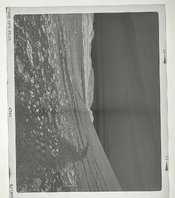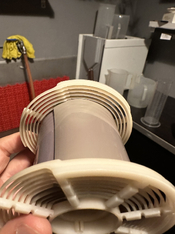argent_negre
Member
Dear all,
I have the following problem with some frames when developing 120 film. I think I know its cause, but I haven't been able to
find a solution. I would like to know if any of you has also had the same problem and have been able to overcome it.
The problem is easy to spot. In the attached imaged, there is a line of higher density, strong enough to spoil the image.
Let me describle the set-up:
- film developed in Jobo 15xx series tank, by inversion (one minute of constant agitation and two inversions every 30sec),
- two rolls in a spiral,
- film is inserted in the spiral with the emulsion facing inside,
- it happens only in at most one frame in a roll, the second one
starting from the part of the roll closest to the center column,
but I am not sure if it corresponds to the first or the second roll
in the spiral (probably the second),
- the problem is developer independent.
I think that the cause is the following: when a roll is inserted in the spiral, its end has a strongest curl.
When the second film is inserted, a part of it lies on top of the curl of the first one. On this part, the developer
flows faster than on the rest of the film, thus creating the density line.
My agitation pattern is rather slow, but I bang the tank against the counter with two or three strong blows, otherwise
I have problems with bubbles.
I will appreciate any help you can get me.
Best regards,
Pau
I have the following problem with some frames when developing 120 film. I think I know its cause, but I haven't been able to
find a solution. I would like to know if any of you has also had the same problem and have been able to overcome it.
The problem is easy to spot. In the attached imaged, there is a line of higher density, strong enough to spoil the image.
Let me describle the set-up:
- film developed in Jobo 15xx series tank, by inversion (one minute of constant agitation and two inversions every 30sec),
- two rolls in a spiral,
- film is inserted in the spiral with the emulsion facing inside,
- it happens only in at most one frame in a roll, the second one
starting from the part of the roll closest to the center column,
but I am not sure if it corresponds to the first or the second roll
in the spiral (probably the second),
- the problem is developer independent.
I think that the cause is the following: when a roll is inserted in the spiral, its end has a strongest curl.
When the second film is inserted, a part of it lies on top of the curl of the first one. On this part, the developer
flows faster than on the rest of the film, thus creating the density line.
My agitation pattern is rather slow, but I bang the tank against the counter with two or three strong blows, otherwise
I have problems with bubbles.
I will appreciate any help you can get me.
Best regards,
Pau












